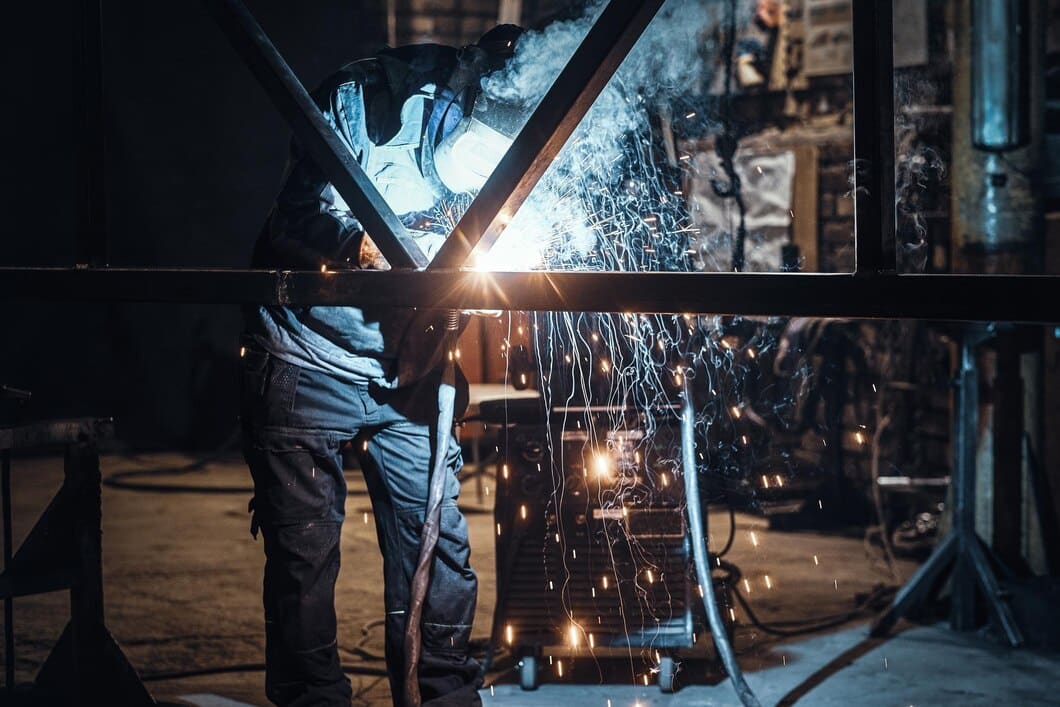Metal is a key part of our world, used in everything from buildings to tools we use every day. But how do these metal items come to life? The answer lies in custom metal fabrication. This process lets us create unique, high-quality metal pieces tailored to specific needs.
Custom metal fabrication combines science and craftsmanship. It’s not just about cutting and shaping metal. It involves careful planning, precise execution, and skillful techniques. This process ensures that each piece fits perfectly and functions well.
Learning about custom metal fabrication helps us appreciate the hard work and technology behind everyday metal items. By understanding the different stages and techniques, we can see why custom fabrication is important for creating durable, reliable products. This knowledge also highlights the value of skilled professionals who make these projects possible.
What Is Custom Metal Fabrication and Why Is It Important?
Custom metal fabrication is the process of creating metal structures and components that are tailored to specific needs. This involves cutting, bending, and assembling metal to meet the exact requirements of a project. Unlike standard fabrication, which produces mass quantities of uniform products, custom fabrication focuses on unique designs and specifications. This makes it essential to create specialized parts that fit perfectly and function efficiently in various applications.
The importance of custom metal fabrication cannot be overstated. It allows for flexibility in design, enabling us to create metal pieces that are precisely suited to their intended use. Whether it’s a one-of-a-kind machine part or a specialized construction element, custom fabrication ensures that each piece meets high standards of quality and performance. This process helps in reducing waste by making sure that the metal is used efficiently, and it also saves time by avoiding the need for modifications and adjustments later on.
Key Stages in the Custom Metal Fabrication Process
The custom metal fabrication process involves several key stages. First, we start with the design phase, where we create detailed plans and blueprints for the metal piece. This stage is crucial as it sets the foundation for the entire project. Next, we move on to the material selection phase. Choosing the right type of metal is essential for ensuring that the finished product will be strong, durable, and suitable for its intended use.
Once the design and material are finalized, the actual fabrication begins. This stage can be broken down into several steps:
- Cutting: We use various tools like laser cutters or saws to cut the metal into the required shapes and sizes.
- Bending: The cut pieces are then bent into the desired angles and forms using machines like press brakes.
- Assembling: Finally, the bent metal pieces are assembled and joined together. This often involves techniques like welding or riveting to ensure a strong and durable bond.
Each of these stages requires precision and skill to ensure that the final product meets the design specifications and quality standards. By following these steps carefully, we can create custom metal pieces that are both functional and reliable.
What is Custom Metal Fabrication and Why is It Important?
Custom metal fabrication involves designing and creating metal parts tailored to specific requirements. This process is vital because it ensures that the final product perfectly fits the intended use, whether for industrial machinery, architectural elements, or specialized equipment. Custom fabrication allows for a high degree of precision, meeting the unique needs of individual projects.
The importance of custom metal fabrication can’t be overstated. It allows for flexibility in design, enabling us to create components that are not available off the shelf. Custom parts meet exact specifications, ensuring the highest level of functionality and performance. This process is essential for industries that require unique metal solutions, as it provides the ability to innovate and improve with tailored metal components.
Key Stages in the Custom Metal Fabrication Process
Custom metal fabrication involves several key stages, each crucial to the success of the final product. The first stage is designing. This is where ideas are turned into detailed plans and blueprints. CAD software often helps in this process, providing precise dimensions and layouts. The design sets the foundation for the entire project.
Next is the cutting stage, where raw metal sheets or bars are cut into the necessary shapes based on the design. Laser cutting, plasma cutting, and water jet cutting are common methods used. Once the cutting is complete, the forming stage begins. This stage involves bending, rolling, or stamping the metal into the required shapes.
Finally, the joining stage comes into play. This involves welding, riveting, or fastening the pieces together to create the finished product. Each stage is critical in ensuring that the metal part or structure is accurately made and ready to perform its intended function.
Conclusion
Understanding the various aspects of custom metal fabrication highlights its importance and complexity. From precise cutting techniques to intricate forming methods, each step requires a high level of expertise and attention to detail. The value of custom metal fabrication lies in its ability to produce exact components that meet unique needs, ensuring that the final products are both functional and durable.
At TriPoint Fabrication, we pride ourselves on delivering high-quality custom metal projects. Our thorough approach and advanced techniques mean that we can meet your specific metal fabrication needs with precision and reliability. If you have a project that requires expert metal fabrication, laser cutting, or welding services, get in touch with us today and see how we can help make your vision come to life.


0 Comments